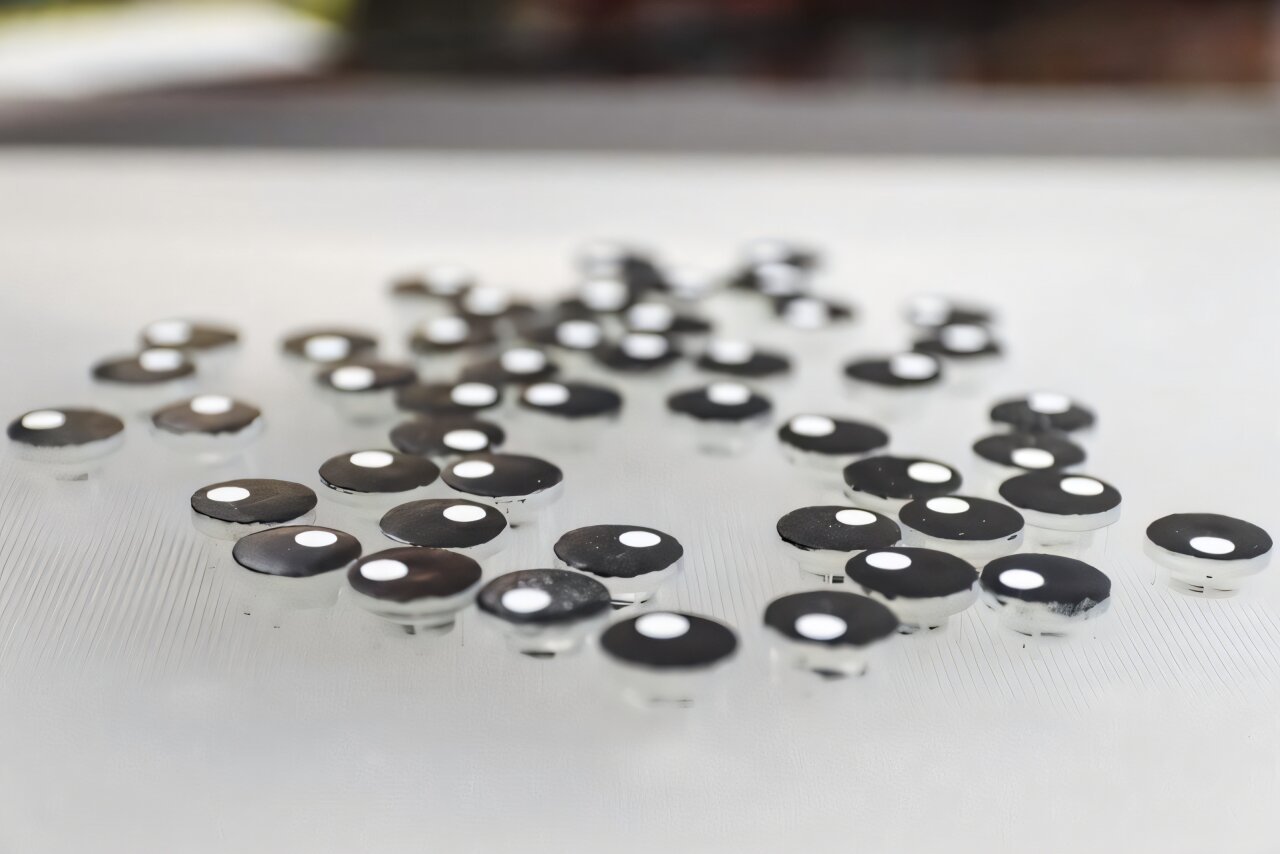
How can a horde of active robots be automatically brought to a standstill? By arresting their dynamics in a self-sustained way. This phenomenon was discovered by physicists at Heinrich Heine University Dusseldorf (HHU) and La Sapienza University in Rome. The threshold principle of static friction with the ground plays a decisive role here: it removes the kinetic energy of two robots after a mutual collision so efficiently that they can no longer set themselves in motion.
The researchers describe in the journal Nature Communications that this fundamental effect can also be used to construct controllable moving robot systems.
Friction creates heat, as anyone knows who has rubbed their hands together in winter weather. And friction costs energy. Road friction on vehicle tires, for example, will cause a moving car to steadily slow down unless the accelerator is used.
Two solid bodies, one on top of the other, will not move, even if slightly tilted, because static friction holds them together. Only when a critical tipping angle is reached will the top one slide off, once the friction has been overcome by the force of gravity. Physicists refer to this as “dry” static friction (there being no lubricant), also known as Coulomb friction.
The effect of Coulomb friction on motion is important in many application scenarios. With shaken grains supposed to flow out of a silo, for example, the driving force or “activity” is not constant, but rather fluctuating. This leads to a complicated stop-and-go movement, as one particle moves until slowed down by an unfavorable fluctuation and is then brought to a standstill by static friction, only to start moving again when the next favorable fluctuation occurs. In physics, a particle at rest is said to be “cold” while a particle in motion is “hot.” Static friction thus ultimately causes the cooling of active particles.
In collaboration with Professor Dr. Lorenzo Caprini of Rome, a group of physicists led by Professor Dr. Hartmut Lowen of the Institute of Theoretical Physics II at Heinrich Heine University Dusseldorf studied the behavior of many such active objects. In a demonstration experiment, hundreds of 3D-printed mini-robots scurried about, driven by a vertically vibrating plate.
In moving around, the swarm robots continuously collided with each other. Given high density and low driving force near the threshold, static friction takes hold during collisions, repeatedly causing the colliding particles (robots) to stop moving. In time, this leads to the formation of clusters of robots that are no longer moving, i.e., “cold.”
Professor Lowen states, “Interestingly, with large clusters that dynamically change, a mixed configuration emerges in which cold areas coexist with hot ones. In equilibrium this is impossible, since such temperature differences would immediately cancel each other out through collisions.”

This behavior is induced by an interplay of the competing forces of activity and Coulomb friction. In extensive computer simulations conducted at Heinrich Heine University Dusseldorf, which faithfully modeled the experiment, study lead author Dr. Alexander Antonov found similar behavior in evidence as long as a threshold behavior is the underlying principle. “We have achieved what many theoretical physicists dream of—to understand the physical mechanism behind an experimental phenomenon and subsequently reproduce it in numerical computer simulations.”
Corresponding study author Professor Caprini believes there is potential for future applications, stating, “The key point is that no outside intervention is required to cool the system. Instead, the robots cool themselves down by colliding.”
Professor Lowen observes, “This unexpected cooling effect could be used in the future to automatically control entire armies of robots, or the collective behavior of bulk materials, without external intervention.”
More information:
Alexander P. Antonov et al, Self-sustained frictional cooling in active matter, Nature Communications (2025). DOI: 10.1038/s41467-025-62626-9
Provided by
Heinrich-Heine University Duesseldorf
Citation:
Friction that cools: Threshold effects enable self-stopping robot swarms (2025, August 6)
retrieved 6 August 2025
from https://phys.org/news/2025-08-friction-cools-threshold-effects-enable.html
This document is subject to copyright. Apart from any fair dealing for the purpose of private study or research, no
part may be reproduced without the written permission. The content is provided for information purposes only.




